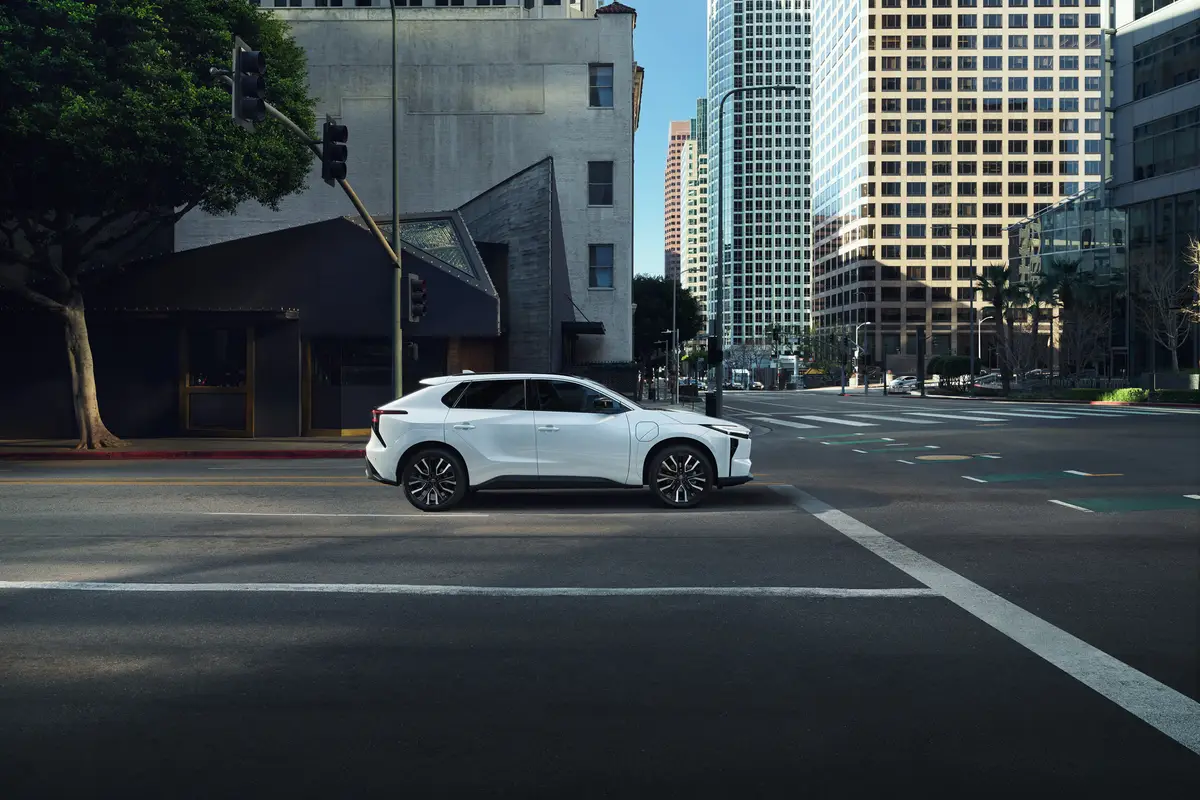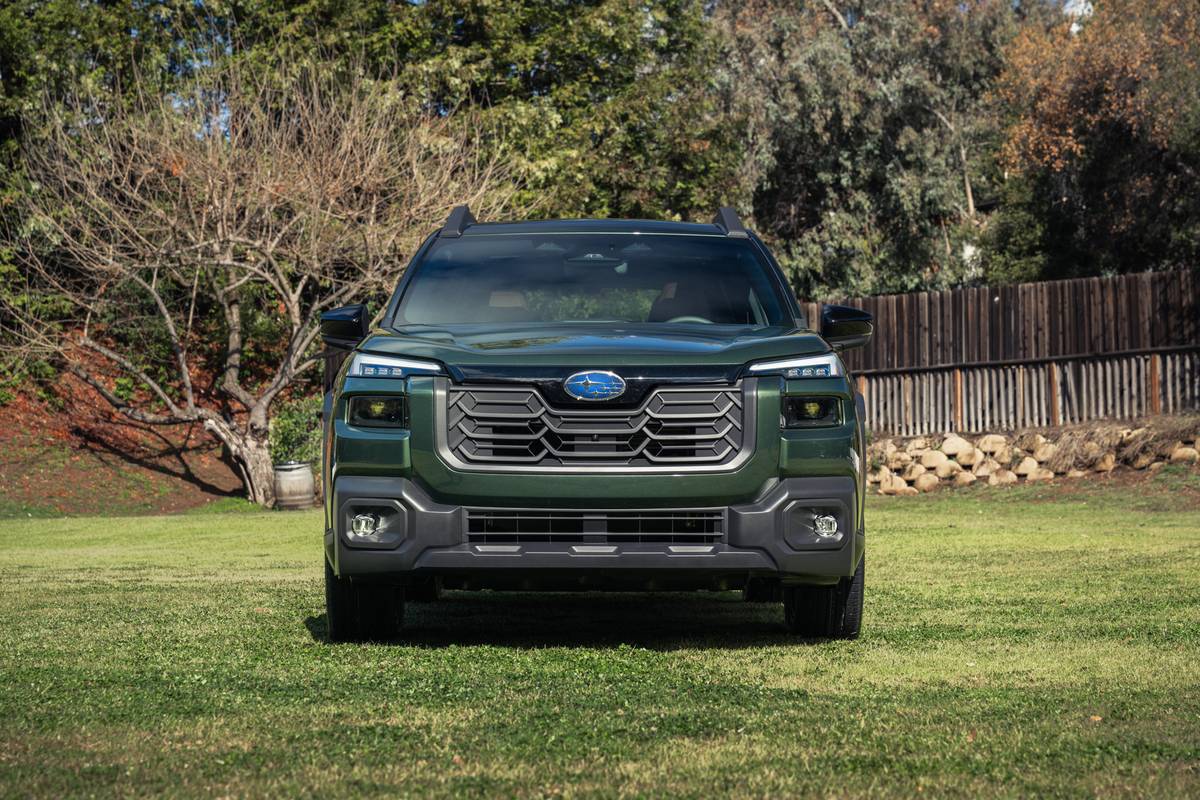Star-Telegram.com's view
Here’s a sport utility vehicle that’s a whole lot more “sport” than “utility.” Not that the 2006 Range Rover Sport supercharged model isn’t suitable for utility purposes; it actually offers more utility than most other midsize SUVs.
But with a supercharged 390-horsepower V-8 engine under the hood, the emphasis truly is on the sport side of the equation.
Even though it’s a rather heavy vehicle, the powerful engine pushes this vehicle along quite impressively, leaving perhaps one question in the mind of a generally inquiring person: Does one really need a sport utility vehicle with this much zip?
Apparently some consumers think so, because dealers say they can’t keep the supercharged Sport model in stock, and even have people waiting in line to get one of them.
So much for the theory that the spike in gasoline prices is hurting the sales of high-end SUVs. The supercharged Sport’s EPA ratings of 13 miles per gallon in the city and 18 mpg on the highway apparently aren’t much of a deterrence.
Nor is the $69,535 base price (plus $715 freight).
With a few extras tacked on, our test model’s sticker topped out at $76,150, which isn’t exactly chump change in today’s automotive market, where the average 2007 Chevrolet Tahoe transaction price is just over $41,000.
Putting some sport into the sport utility genre – albeit for people who can afford expensive cars – was the idea behind creation of the Range Rover Sport, an all-new model this year for the British Land Rover brand.
With a starting price of $56,750 for a normally aspirated 4.4-liter V-8 HSE model with 300 horsepower, this newest model makes the Range Rover brand a bit more affordable. The regular Range Rover line for 2006 begins at just over $75,000 for a normally aspirated model, and rises to about $90,000 base for the supercharged version.
The Sport, then, fits in between the midsize Land Rover LR3, which begins under $40,000, and the regular Range Rover line. The LR3, introduced for 2005 to replace the aging Discovery model, and the Sport share the same midsize chassis; the more-expensive Range Rover is slightly larger and on a different chassis.
The main reason for introducing the Range Rover Sport was to go after some quite popular luxury SUVs in the same price range, most notably the BMW X5, Mercedes-Benz ML500, Porsche Cayenne and Lexus LX 470.
Not having a luxury model that directly competes with the M-class and X-series has hampered Land Rover’s efforts under new owner Ford Motor Co. to bring its products into the mainstream.
Land Rover introduced the Range Rover in the United States in 1987 as the first luxury SUV ever.
Prices have climbed along the way, however. In the early ’90s, Range Rover prices began in the upper $30,000s. Today, that’s the price you’d pay for a high-end model of the Ford Explorer or Jeep Grand Cherokee.
Land Rover did have the Discovery II model starting at just over $35,000, but that vehicle, discontinued after 2004, was nowhere nearly as luxurious as a Range Rover, and drew a distinctly different clientele.
The Discovery’s replacement, the LR3, was built on a new platform derived but substantially different from the chassis of the current Range Rover, which was introduced in 2002.
The full-size Range Rover, whose development was begun while Land Rover was a subsidiary of BMW, had a lot of BMW German engineering built in, including a choice of BMW V-8 engines.
The LR3, though, was developed as the first product by Land Rover under ownership of Ford, which bought Land Rover from BMW in June 2000.
The Sport is now the second Land Rover developed under Ford tutelage, using the platform of the LR3 as its base, not the BMW-inspired Range Rover model. The chassis of the LR3 was shortened to a 108-inch wheelbase from nearly 114 inches for the Range Rover Sport.
Its developers essentially took the unibody of the current Range Rover and dropped it into a separate frame to create both the LR3 and the Range Rover Sport. The addition of the frame underneath makes the vehicles much more rigid – and rugged – the company said.
Also, for 2006, Land Rover has replaced the BMW engines in the more-expensive Range Rover line with two V-8s developed from Jaguar, the British sports-car company that is also owned by Ford. And it is versions of these two engines that also power the new Range Rover Sport.
How well Land Rover can keep the Sport model differentiated from the lower-priced LR3 and the higher-priced Range Rover, which is a completely different vehicle, might be the brand’s biggest challenge. While the Sport has the underpinnings of the LR3, it’s styling is quite similar to that of the regular Range Rover.
The Sport model also represents a less-expensive way to get a Range Rover with the supercharged V-8.
The top-of-the-line Range Rover model with the 4.2-liter supercharged is rated at 400 horsepower, while the Sport model with its own version of that engine, and priced about $20,000 less, is rated at 390 horsepower.
There is a big difference in the four-wheel-drive systems, however – a difference that actually makes the less-expensive Sport model the better off-road performer. At the heart of its off-road equipment is the same computerized “Terrain Response” system Land Rover introduced on the LR3 for 2005.
That system, which has separate settings to match the vehicle to the type of terrain such as rock, sand or snow, is not offered on the more-expensive Range Rover but is standard on the Range Rover Sport. Those who plan to take their vehicles off-road probably will want to choose either the LR3 or the Range Rover Sport for their superior capabilities. Out of the box, these vehicles have arguably the best off-road system on the market, a system that includes standard center- and optional rear-locking differentials.
Still, it’s hard to imagine that someone would take a $76,000 vehicle such as our test model of the Sport out on some rugged trail somewhere. I would, but that’s just me. People who buy these cars generally like the idea that they can take them anywhere at any time, but they usually don’t.
The overall design of the Sport is less formal than the Range Rover, more rounded and aerodynamic, Upex said. Its 0.36 coefficient of drag is among the lowest of all sport utility vehicles.
The Sport has room for just five people – there is no third row of seating in this model or in the more-expensive Range Rover line. The LR3 is the only Land Rover vehicle with a third row.
It isn’t the quickest SUV on the road, even with the supercharged engine. Coupled with the standard six-speed automatic gearbox, the supercharged Sport can accelerate from zero to 60 mph in 7.2 seconds.
In comparison, the Chevrolet TrailBlazer SuperSport model for 2006 comes with a 400-horsepower Corvette V-8 engine and can go from zero to 60 mph in just under six seconds. It costs about half as much as the supercharged Range Rover Sport.
Our test vehicle came with just about everything you can add to the Sport, including adaptive cruise control ($2,000), which paces the vehicle to the one in front, and warns the driver, even when not using the cruise control, if the vehicle is getting too close to another car; a rear differential lock ($500); personal telephone integration system ($400); rear-seat DVD entertainment system ($2,000); and Sirius satellite radio ($600).
Luxury features abound on this vehicle, including sport leather seats, dual-zone automatic climate control, 550-watt audio system with six-disc CD changer, ultrasonic parking assist, GPS navigation, automatic bi-xenon headlights with power washers, side-curtain air bags front and rear, and four-corner automatic-leveling air suspension with three manual settings.
But one high-tech feature that I found annoying is a system that automatically dips the side mirrors down when the transmission is shifted into reverse.
This feature has virtually no value in the real world. When I start backing up, I rely on the side mirrors to show me whether there are trees, cars, or other obstacles that might be in my way. The last place I want to look is straight down at the pavement beside the car. A check of the Range Rover Sport’s owner’s manual showed me how to turn off this otherwise automatic feature, and that’s what I did.
G. Chambers Williams III is staff automotive columnist for the San Antonio Express-News and former transportation writer for the Star-Telegram. His automotive columns have appeared regularly in the Star-Telegram since 1995. Contact him at (210) 250-3236; chambers@star-telegram.com. 2006 Range Rover Sport The package: Midsize, four-door, five-passenger, V-8 powered, fulltime four-wheel-drive luxury sport utility. Highlights: This is an all-new model for Land Rover for 2006, priced between the LR3 and the more-expensive Range Rover line. It comes in normally aspirated and supercharged versions, loaded with high-tech features and amenities. Negatives: No room for a third seat; pricey for its class. Engine: 4.2-liter supercharged V-8; 4.4-liter normally aspirated V-8. Transmission: Six-speed automatic. Power/torque: 305 hp./325 ft.-lbs. (4.4-liter); 390 hp./410 ft.-lbs. (4.2-liter). Length: 188.5 inches. Curb weight: 5,648-5,671 pounds. Brakes, front/rear: Disc/disc, antilock. Cargo volume: 71 cubic feet (rear seat folded). Fuel capacity/type: 23.2 gallons/unleaded premium. EPA fuel economy: 14 miles per gallon city/19 highway (4.4-liter); 13/18 (4.2-liter). Major competitors: Porsche Cayenne, Mercedes-Benz ML500, BMW X5, Audi Q7, Lexus LX 470. Base price range: $56,085 (HSE)-$69,535 (Supercharged), plus $715 freight. Price as tested: $76,150 (Supercharged model with freight and options). On the Road rating: ****-1/2 (four-and-a-half stars out of five).
Prices shown are manufacturer’s suggested retail; actual selling price may vary according to manufacturer and/or dealer rebates, discounts and incentives, if any.
Latest news



